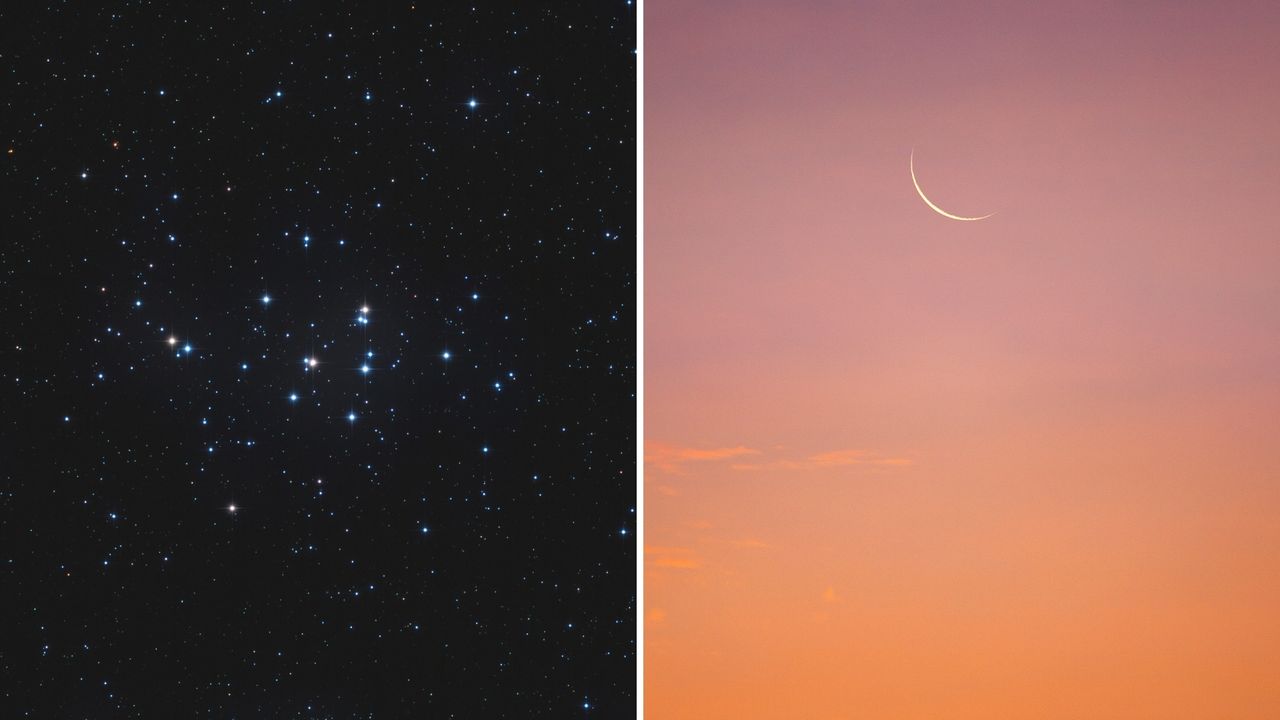Science
Catch Mercury and the Moon in a Rare August Sky Alignment

A rare celestial event is set to unfold in the early hours of August, as the planet Mercury, the Moon, and the Beehive Cluster align in a stunning display. This astronomical phenomenon will allow stargazers to catch a glimpse of Mercury, which is often obscured by the sun’s brightness.
On the morning of August 19, Mercury will reach its greatest western elongation, marking its maximum apparent distance from the sun. This provides an excellent opportunity for observers to spot the innermost planet just before sunrise. To catch a view, enthusiasts should set their alarms for 45 minutes before sunrise and direct their gaze toward the east-northeast horizon. The bright planet Venus will be the first object seen, with Mercury appearing approximately 15 degrees lower left of it.
Moon to Illuminate the Path on August 21
Two days later, on August 21, the Moon will join the scene, acting as a guide to Mercury. On this morning, the Moon will appear as a slender crescent, only 4% illuminated, positioned around 5 degrees above Mercury. While binoculars can enhance the viewing experience, the crescent Moon should be visible to the naked eye. Mercury will shine at a magnitude of -0.3, brighter than most stars, making it easier to identify once the Moon is located.
As the month progresses, Mercury will continue to be visible, gradually increasing in brightness. By August 28, it is expected to reach a brilliant magnitude of -1, providing additional chances for observation.
Discover the Beehive Cluster
In addition to Mercury and the Moon, a notable feature of the night sky will be the Beehive Cluster, also known as M44. This open cluster is located approximately 500 light-years from Earth and can be found about 2 degrees below the crescent Moon. Binoculars are recommended for exploring this fascinating star field, where a group of stars forms a triangular shape reminiscent of a traditional beehive.
Historically, M44 has been referred to as Praesepe, which means “Manger” in Latin. The cluster is also flanked by two stars named Asellus Borealis and Asellus Australis, representing the Northern and Southern Donkeys in historical astronomy.
Joe Rao, an instructor at New York’s Hayden Planetarium, highlights the significance of these celestial events in his writings for various publications, including Natural History magazine and Sky and Telescope. His insights remind us of the wonder that the night sky offers, particularly during special alignments like this one.
As the days of August unfold, stargazers are encouraged to take advantage of these opportunities to appreciate the beauty of the universe. With the right timing and a bit of preparation, the rare sight of Mercury, the Moon, and the Beehive Cluster can be a rewarding experience for both novice and seasoned astronomers alike.
-

 Lifestyle3 months ago
Lifestyle3 months agoLibraries Challenge Rising E-Book Costs Amid Growing Demand
-

 Sports3 months ago
Sports3 months agoTyreek Hill Responds to Tua Tagovailoa’s Comments on Team Dynamics
-

 Sports3 months ago
Sports3 months agoLiverpool Secures Agreement to Sign Young Striker Will Wright
-

 Lifestyle3 months ago
Lifestyle3 months agoSave Your Split Tomatoes: Expert Tips for Gardeners
-

 Lifestyle3 months ago
Lifestyle3 months agoPrincess Beatrice’s Daughter Athena Joins Siblings at London Parade
-

 World3 months ago
World3 months agoWinter Storms Lash New South Wales with Snow, Flood Risks
-

 Science3 months ago
Science3 months agoTrump Administration Moves to Repeal Key Climate Regulation
-

 Science2 months ago
Science2 months agoSan Francisco Hosts Unique Contest to Identify “Performative Males”
-

 Business3 months ago
Business3 months agoSoFi Technologies Shares Slip 2% Following Insider Stock Sale
-

 Science3 months ago
Science3 months agoNew Tool Reveals Link Between Horse Coat Condition and Parasites
-

 Sports3 months ago
Sports3 months agoElon Musk Sculpture Travels From Utah to Yosemite National Park
-

 Science4 months ago
Science4 months agoNew Study Confirms Humans Transported Stonehenge Bluestones









